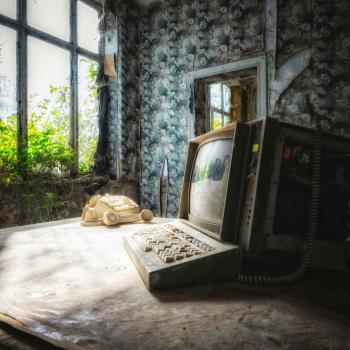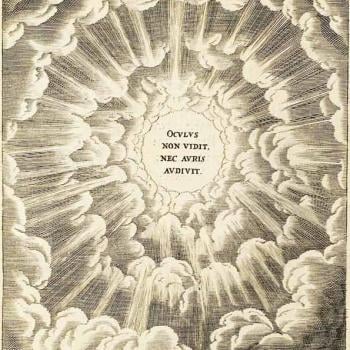Traditional Craft however, is more flexible and eclectic, absorbing current trends by adaptation in order to survive. It has loose associations and affiliations, but is often though by no means always, autonomous. Deities are amorphous, largely unnamed syntheses, referred to vaguely as the old ones, or other quaint colloquialisms. It has subsumed a variety of teachings from Anglo-Saxon hexcraft, Arabic talismanic theurgy, Judaic Kabbalah, Bardic traditions, ‘Celtic' Christianity, and in some cases, gnostic heresies. Moreover, many see true sabbatical craft practice as being oneiric. In this night flight of the dream state, where free of matter, the spirit is enjoined to its true purpose.
Wicca springs from a different Muse entirely from that of Traditional Craft, a title under which considerable variety thrives. Wiccan priestesses are appointed to head and lead their own covens, which are entirely autonomous, disseminating the ‘up line' ad infinitum, sharing in theory, equal status, having clear rights to initiate others into the Wiccan system. However, each offshoot/splinter group acquires a new name in accord with their new autonomy. They do not share a homogenous name as Craft families do, nor do they all share and revere a specific deity. Rather, each coven arbitrarily decides upon a name, a pair of deities whom they will then concentrate upon and work through.
Clanships operate very differently, on every point mentioned above in fact. Each Clan remains a closed unit, retaining its (often hereditary) line within. This lineage is received and passed once only by all those to whom the mantle is gifted in accordance with virtue. Robert Cochrane allegedly received his authority from a female relative, which was imparted to his wife, who gave this up to John and thus finally to myself. A Clan therefore is headed by only one working couple at any one time, having no parallel whatsoever within Wicca. Clanships do allow for adoptions from kindred groups into its patronage.
A Clan is a very specific term that determines a group of people united by actual or perceived kinship and descent. Clan members will frequently recognize a founding member or apical ancestor where actual lineage patterns remain improvable or unknown. Kinship-based bonds may also be only symbolical in nature, where all people within the Clan share this given (common) ancestor that symbolizes their identity and cohesion as a family. This ancestor is however, not always human and will then be referred to as an atavistic totem.
The eponymous personage to whom any Clan becomes know by is generally derived from just such a primal ancestor. As the Clan of Tubal Cain are and remain a ‘people' aligned to a perceived Tutelary deity (real or mythical), we are subject to the principle of Suzerainty. Wherever we are, the Suzerain (Maid) is paramount, independent and irrespective of any ruling monarch. Traditionally, Suzerainty is applied to feudalism, and all the principles of vassalage, liege lords, etc. What this means effectively, is that a Lord or Chieftain (primarily, and his good lady wife) hold the mantle of reciprocity and service via an oath to and from his/her people, with all parties duty bound under its sacrosanct mutually obligatory premise declared in troth to the god/s of those people. This implies therefore an element of divine authority and responsibility.
Therefore, we are not geocentric and draw Virtue from an ancestral lineage centered not in the land, having no blood acre, but in its people. Our whole Cosmology negates geo-centricity. We remain aligned to the histories of its peoples. A people subsumes its gods through evolution and progress, but a geocentric monarchy or system such as Wicca may not. Any faith or practice rooted in the land is tied to that of its prevailing Oligarchy. The nomad on the other hand retains the faith of his ancestors; I follow the gods of my father's father, etc. Virtue is of the line, then, not land, not even mythically.
Traditionals vary in belief also, many having Gnostic or dual-faith principles rooted within syncretized Christianity. Similarly gnostics have a history of being travelling mendicants, bound by no land or state. Wicca of course is primarily Pagan, specifically, neo-Pagan, being a radical construct developed in the latter half of the 20th century that draws upon the 18th-century Romantic revival of classical paganism, of ‘Arcadia' through various artistic media. This false hope in a grim world had been the primary intellectual motivation that pushed forward into later Victorian occultism, all of which remained distinct from associations with Witchcraft. Many of its exponents were practicing Christians.
Our concept of sacred space again runs contra to Wicca. Freedom of movement is granted in and out of the ring; no barrier exists, indicating an acceptance of the power and force of the gods through nature as omnipresent and omniscient. Areas used in modern traditional Witchcraft can encompass more than one circle; movement between them is ardently encouraged. These include locations at caves, hilltops, forests, bridges, lakes—whatever is appropriate to the rite being performed, whether divination, spell-casting, or communion.




